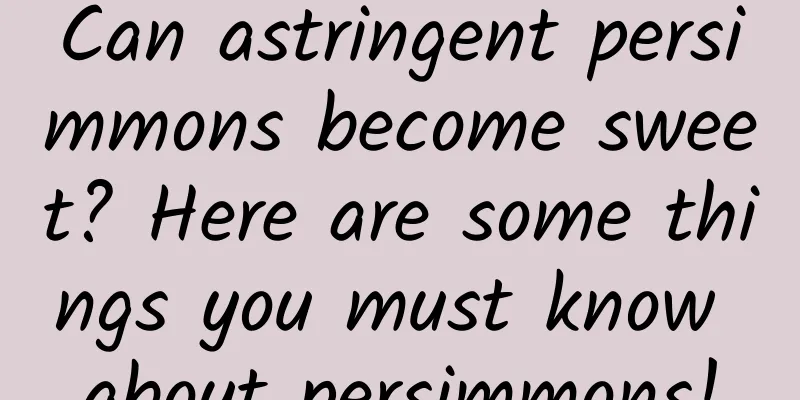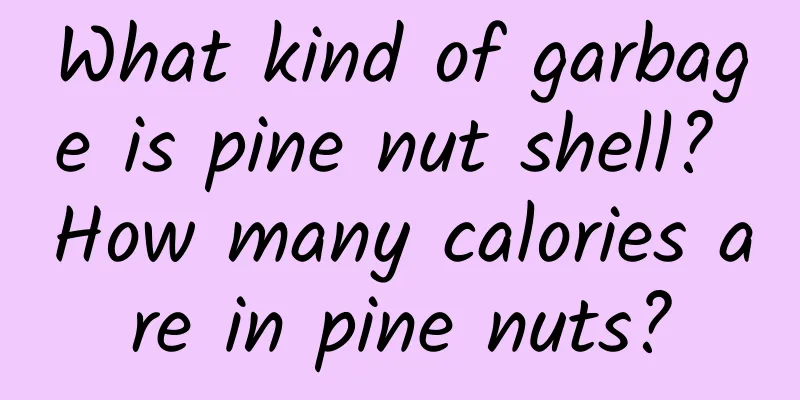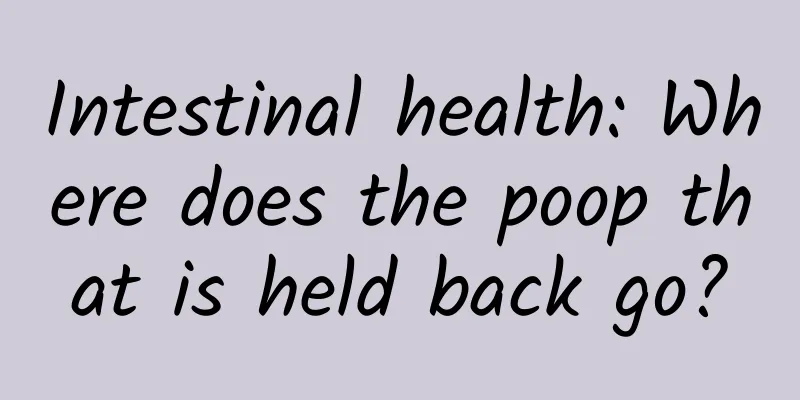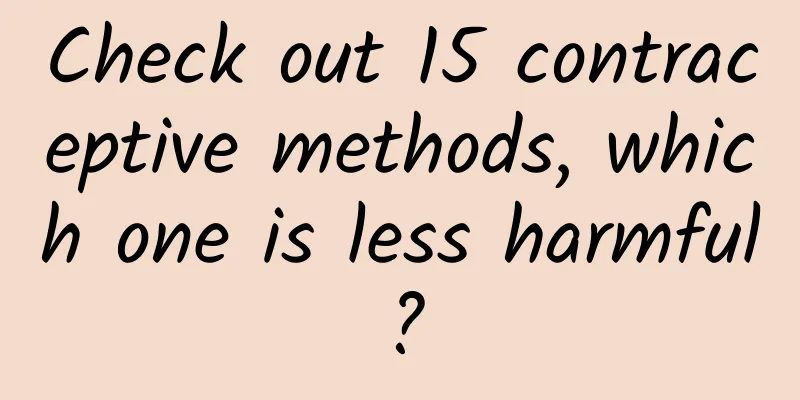Can astringent persimmons become sweet? Here are some things you must know about persimmons!

|
Hello, this is Science Popularization China. It is the season for persimmons again, but there are many controversies about eating persimmons. Some people praise it for being delicious and nutritious, while others say it is unpalatable and harmful to health. What is going on? Today, let's talk about persimmons. In fact, persimmons are quite nutritious. They are not only rich in vitamin C, mineral potassium, and carotene, but also contain antioxidant ingredients such as total phenols and flavonoids. Eating persimmons regularly can not only protect the eyes and skin, but also resist oxidation, improve constipation, and maintain the body's normal immune function. But it should be noted that persimmons that are too astringent should be eaten less, otherwise excessive intake of tannic acid will increase the risk of constipation. Image source: unsplash.com Photographer: JonnyJames Some people are curious about why some persimmons taste very sweet, while others taste very astringent. In fact, this is not only related to the variety, but also has a lot to do with whether it has been "de-astringented". According to the difference in astringency of persimmons, we can divide them into four categories: sweet persimmons, incompletely sweet persimmons, astringent persimmons, and incompletely astringent persimmons. Among them, the tannic acid content of astringent persimmons and incompletely astringent persimmons is much higher than that of the other two. This tannic acid is also called soluble tannin, which is the source of astringency. Many people dare not eat persimmons because the tannin in persimmons will form indigestible complexes with proteins and sugars in food, reducing the nutritional value. It will also combine with proteins, pectin, etc. under the action of gastric acid to form gastric persimmon stones, causing stomach discomfort. Generally speaking, the soluble tannin content in persimmons will decrease as they mature, but even when astringent persimmons are ripe, they still require human intervention to further remove the astringency. Image source: unsplash.com Photographer: JerryWang Therefore, if you buy astringent persimmons, you can seal them together with ripe fruits, or soak them in warm water at 40 degrees Celsius and keep heating for 16 to 18 hours to remove the astringency. Some people will put astringent persimmons in cold water to remove the astringency, but this method takes longer. In the north, people will put the more astringent persimmons on the outdoor windowsill. After a long time, the persimmons will naturally become soft and the astringency will fade. This is because slow freezing can destroy the cell walls and cell membranes, produce water-soluble pectin and sugar substances, and thus make the astringency of the persimmons disappear. Therefore, if you put the persimmons in the freezer of the refrigerator and freeze them slowly, you can also remove the astringency. After all this, you should have understood that if you still find it troublesome to remove the astringency, just buy sweet persimmons. Finally, I wish you all "good luck with ten thousand persimmons"! Image source: unsplash.com Photographer: LadimirLadroid Review | Zhong Kai, Researcher at the National Food Safety Risk Assessment Center |
<<: Respiratory diseases are common in autumn. Experts share tips on how to prevent and treat them
Recommend
Just got pregnant B ultrasound report picture
It is very important for every pregnant mother to...
What are the reasons why nipples hurt when touched?
Many female friends experience pain in their nipp...
Is it good for women to have an IUD?
Is it good to have an IUD inserted? Is it harmful...
Why does leucorrhea have a fishy smell?
As a kind of female body secretion, leucorrhea ha...
What causes a long menstrual cycle?
Women's menstruation can be affected by many ...
How to reduce a big belly? What are the dangers? AHA scientific statement
Since the 1980s, the prevalence of obesity has be...
How to remedy headache after abortion
Because people nowadays reach sexual puberty at a...
Are spitting up milk and spilling milk the same? What is the difference between spitting up milk and spilling milk?
We all know that babies often have various proble...
When will the high school entrance examination results be released? How to check the results
The junior high school entrance examination, also...
What to do if your menstruation doesn't stop due to uterine fibroids
If the uterine fibroids are not large and there a...
Is there a high chance of pregnancy with an IUD?
We all know that the IUD is a method of contracep...
What happened to Shandong recently? Why is Tik Tok Shandong so popular?
Recently, major platforms such as Douyin, Weibo, ...
Pregnant women squatting is harmful to the fetus
Most pregnant women are young people. Because the...
How to deal with eczema on both sides of the genitals
Eczema is a common skin disease with a high incid...
Summer vacation is not over yet, and the child's hyperopia reserve is gone? !
The summer vacation is long and the weather is ho...









